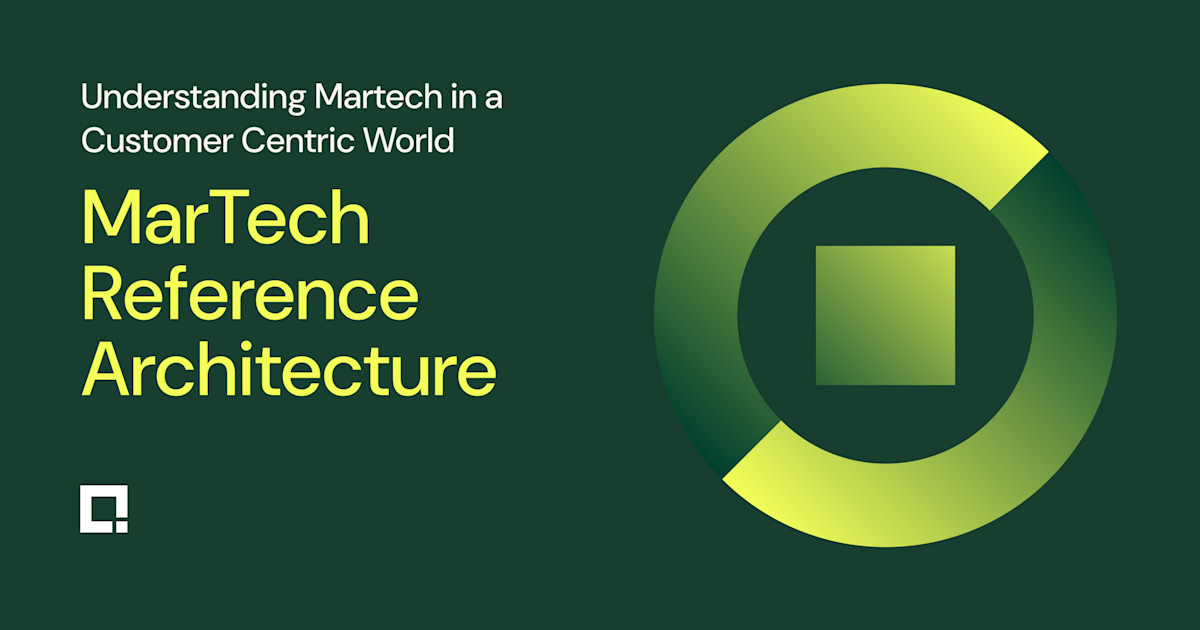Strategy
Jul 14, 2024
Credera’s MarTech Reference Architecture part 1: An overview of how it works

Technology exists to optimize and automate complex or manual tasks, and the business of marketing is no doubt, complex. For marketers, this is where marketing technology, or “MarTech,” comes in. MarTech is the set of tools needed to activate customer data and content to enable more personalized and meaningful customer experiences at scale. However, if MarTech exists to make life easier, why is it so difficult to understand all that goes into making it work (much less be an expert in it)?
Over the coming weeks, we will attempt to simplify the MarTech puzzle using Credera’s MarTech Reference Architecture. This reference architecture, a key piece of Credera’s end-to-end MarTech assessment and enablement framework, provides a logical view of the data, processes, and technology needed to enable one-to-one marketing use cases. Put more simply, we use the reference architecture as a tool to explain the building blocks that are required to enable modern, data-driven marketing.
Throughout this series, we will explain each component of the MarTech Reference Architecture by providing the following details on each capability area:
What it is
Why it matters and top use cases
Top tools and technologies
Keys for driving maturity
Future trends and considerations
Before diving into the details, let’s start by simplifying the architecture down to its three main components:

The next level of detail shown below illustrates the logical relationship of how data-driven marketing is conducted.

High-level, logical view of the MarTech Reference Architecture components
From left to right, data is ingested and unified before being processed and stored for analysis and activation. Along the way, content is created to be served to customers across omni-channel touchpoints. Every interaction throughout this process should be measurable, providing a data feedback loop to the overarching customer engagement strategy to inform future marketing decisions.
Detailed architecture view
Behind the high-level, process-centric view, we use a more detailed version of the architecture to help organizations map out their current state technology and data environment.

Detailed view of the MarTech Reference Architecture, highlighting the capability areas required to deliver data-driven marketing use cases
How is it used?
We use this detailed version of the architecture as a “mall map” of sorts to align existing client solutions onto the visual shown above. Using this standardized approach ensures that the building blocks needed to conduct modern marketing are in place and allows for easy identification of opportunity areas. In summary, this exercise has three major benefits for marketing organizations:
Detect areas of duplication/redundant spend.
Identify where additional tools, data, or integrations may be required to meet objectives.
Highlight where the right tools and/or data are in place, but not being optimally utilized.
Moving forward
The MarTech Reference Architecture is a key tool Credera uses to help marketers understand the data, processes, and technology needed to enable one-to-one marketing. Stay tuned for more information as next we dive into the first topic area: Consent Management & Data Privacy. (Teaser: If data is new oil, first-party data with proper customer consents is the refined fuel that keeps the modern marketing engine running.)
Overview of upcoming articles in the series:
Part 1: An Overview of How it Works
Interested in seeing how Credera’s MarTech Reference Architecture can be used to assess your MarTech ecosystem and provide an enablement strategy for driving better customer experiences and marketing outcomes?
Reach out to one of our MarTech experts for more information.
Contact Us
Let's talk!
We're ready to help turn your biggest challenges into your biggest advantages.
Searching for a new career?
View job openings





